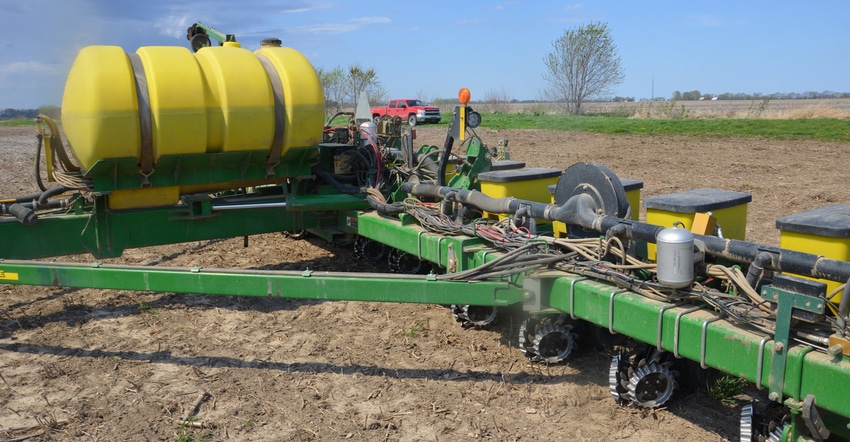
Agronomists and industry experts tackled this question: “What should you invest in first if you’re keeping your used planter and upgrading it?” Doing thorough maintenance and replacing worn parts was easily the most common answer.
What comes after an excellent maintenance program? Betsy Bower, with Ceres Solutions, based in west-central Indiana, isn’t a planter specialist. But if you’re going to invest more money in your planter, she knows what that investment should accomplish.
“The No. 1 thing I think most farmers should invest in, if they haven’t already, are attachments that allow for an even drop at the same depth with the same plant-to-plant spacing and the same seed-to-soil contact,” she says. “One needs to be planting at least 1.5 to 1.75 inches deep.
“The goal is to get all the plants to the V5 to V6 stages at the same time, whether it be no-till or till. Once we meet that goal, we are in the hunt for high yields in general.
“I still walk too many fields with uneven stands, shallow planting, inconsistent spacing, and inconsistent seed-to-seed depth and poor seed-to-soil contact due to residue hairpinning, especially in corn after corn.”
Does this matter to yield? Bower believes it does. If nutrition and genetics were addressed, fields with picket-fence stands, both no-till and till, are typically the fields that yield more, she observes.
Analyze planter upgrade options
Clayton Stufflebeam, Lewistown, Ill., is a Beck’s Practical Farm Research agronomist. He relies on those results over multiple years and his own experience to answer the question about which planter add-ons to invest in first. He breaks his recommendations into two categories: those on a tight budget, and those who feel comfortable investing more:
Tight budget. “If the planter doesn’t have row cleaners, I would add them first, with an air-adjustable system,” Stufflebeam says. He notes that if you already have manual row cleaners, they likely have air cylinders attached. Adding an air system to a planter is the least expensive part of this option, he says.
“I would then upgrade the closing wheels,” he continues. “I recommend making both upgrades at the same time.”
Choose based upon the tillage program, he suggests. For no-till, the S.I. Distributing Finger Till closing wheels offer high performance, while Yetter Poly Twisters perform well in a variety of tillage programs, Stufflebeam says.
His next move would be investing in hydraulic downforce, followed by adding a 2-by-2-by-2 starter fertilizer system if it fits your overall planter and nitrogen system. He would also upgrade to a vacuum meter, such as vSet from Precision Planting.
Freer budget. “Year one, I would recommend the row cleaners, closing wheels, hydraulic downforce and meters, if they haven’t been done yet,” Stufflebeam says. “Then I would install a 2-by-2-by-2 system if it fits the total nitrogen system.”
Next, he would install electric drives for the meters. “I might think about a high-speed system to capitalize on a targeted planting date, too,” he concludes.
Editor’s note: This is the third part in a four-part series about upgrading your planter. Don’t miss the previous stories, Refresh your planter before investing in add-ons and Row shutoffs, electric seed units make good planter upgrades.
About the Author(s)
You May Also Like




